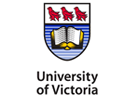The liberalization and integration of regional maize markets in Zambia
| Titre | The liberalization and integration of regional maize markets in Zambia |
| Type de publication | Thesis |
| Nouvelles publications | 2000 |
| Auteurs | Muyatwa VP |
| Advisor | Rempel H |
| Academic Department | Economics |
| Supprimer | Doctor of Philosophy Ph.D. |
| Numéro | 195 |
| University | University of Manitoba (Canada) |
| Clé de citation: | Winnipeg, MB |
| Résumé | The liberalization of the agricultural sector in general, and the maize sub-sector in particular, has been a major component of Zambias structural adjustment program initiated in 1991. However, the government continued to intervene in the maize sub-sector and it was not until June 1995 that the maize market became fully liberalized. For the first time the full participation of private traders in the marketing of maize was allowed. This thesis examines the whether the regional maize markets have become spatially integrated following the liberalization of the maize market. It also examines whether a vibrant private sector has emerged to fill the gap left by the National Marketing Board (NAMBOard) and cooperatives.Wholesale monthly maize prices at seven regional locations over the period 1993:7 to 1997:12 are used to test the degree of market integration in Zambia, using cointegration analysis and a vector error correction model (VECM). The study was also supplemented with data collected from a survey of 188 farmers and 25 traders in 1996.The main findings of the study are: (1) although real producer prices have risen since liberalization, maize production has declined in the LOR region and increased in the non-LOR, while maize retentions have increased in the LOR and decreased in the non-LOR region; (2) the extent of market integration, as measured by the magnitude of market interdependence and the speed of price transmission between the regional markets, has been very limited; (3) although there has been a rapid emergence of private traders, the emergence of a vibrant trading sector that would fill the gap left by the state has been slow; (4) Many of the private participants in the maize market are constrained by inadequate finance, lack of storage facilities, lack of access to information, and poor transportation infrastructure.The study concludes that unless the government provides an enabling environment a vibrant trading sector is unlikely to emerge and the maize market will continue to be inefficient, especially at the farm level. |
| URL | http://proquest .umi .com/pqdweb ?did=728321361 sid=1 Fmt=2 clientId=3916 RQT=309 VName=PQD |


 The Social Economy Student Network
The Social Economy Student Network


